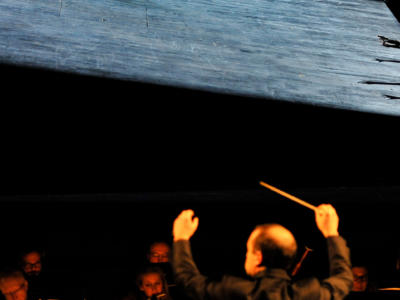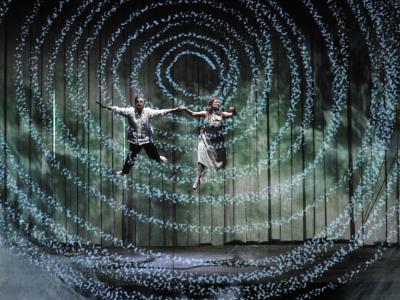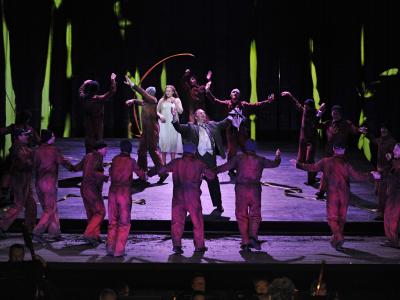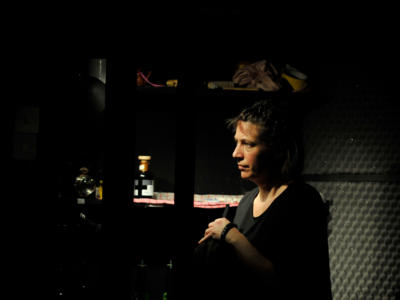ENO: The Magic Flute: The Context
In early 1791, composer Wolfgang Amadeus Mozart teamed up with actor-manager Emanuel Schikaneder, an old acquaintance and a fellow Freemason, to write a ‘comedy with machines’ for a theatre in the Viennese suburbs. The theatre’s finances, like Mozart’s own, were precarious. Schikaneder was confident that the new opera would be a box-office triumph.
Schikaneder based his libretto for The Magic Flute on an eclectic range of sources including pantomime, Paul Wranitzky’s magic opera Oberon, King of the Elves and a popular collection of oriental fairy tales. Beyond these, he drew on at least three further sources for the opera’s Masonic precepts and symbolism: a French novel with an Egyptian setting; Tobias von Gebler’s heroic drama Thamos, König in Egypten, for which Mozart had written some magnificent incidental music; and an essay entitled The Mysteries of the Egyptians by Ignaz von Born, one of Vienna’s most revered Freemasons.
In the bird-catcher Papageno – a reincarnation of a figure from Viennese pantomime – Schikaneder created for himself a character in which he could exploit his talent for milking an audience. He regularly stole the show, exactly as planned.
Within six months Mozart had almost completed the whole score of the opera. He then broke off to embark on a new, serious opera, La clemenza di Tito, for the coronation of Leopold II in Prague; and it was only after his return from Prague in mid-September that he returned to The Magic Flute, completing the Overture and the March of the Priests just two days before the premiere on 30 September.
Although not an immediate sensation, the opera quickly became the hit of the season.

Portrait of Wolfgang Amadeus Mozart
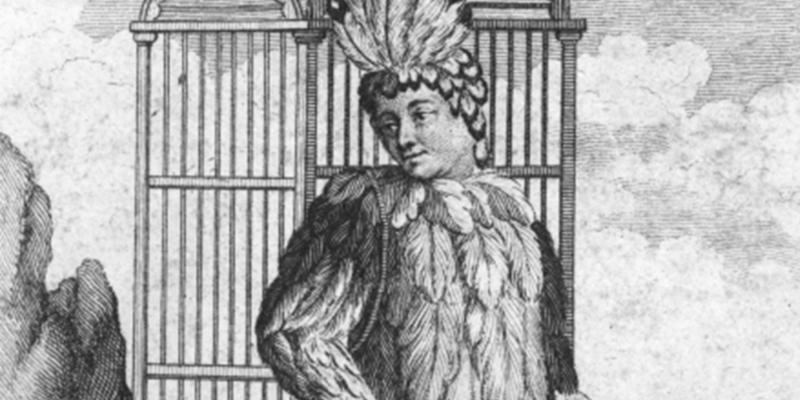
Schikaneder playing the role of Papageno in The Magic Flute. Engraving by Ignaz Alberti
Freemasonry and Masonic Symbolism
The Magic Flute is not set in a particular historical period, but the opera is strongly influenced by the ideas of Freemasonry. Both Mozart and Schikaneder were Freemasons, an organisation that taught self-improvement and philosophy through participation in a progression of ceremonies. These ceremonies inspired the trials of silence, water and fire in the opera.
Sarastro’s cult based on wisdom and the male pursuit of knowledge represents this Enlightenment ideal of a learned world order only available to men at this time. Mozart’s representation of the female characters of the Queen of the Night and Pamina can also be said to contradict traditional eighteenth-century gender politics. For example, the powerful force of the Queen’s music demonstrates her independence and her domination in contrast to the subdued male choruses of Sarastro’s followers, and it is only through Pamina’s choice to enter the trials alongside Tamino that their happy ending is ultimately ensured.
The symbol of the number three, significant in Masonic symbolism, is peppered throughout in the opera, for example, by the use of Three Ladies, Three Spirits, three trials, and the three chords first heard in the overture. The overture is also written in the key of E flat – which has three flats in its key signature.
The Text
When Emanuel Schikaneder wrote the libretto for The Magic Flute in 1790 he specifically chose to write it in his native German rather than Italian (the traditional language of opera in his day). At ENO we perform all our productions in English for the same reason, translating and adapting original texts so they are accessible to anyone.
Writer Stephen Jeffreys created the text for this ENO production of The Magic Flute. The role of the translator comes with certain freedoms to make choices for new English words, which director Simon McBurney wanted to make sure had a contemporary edge.
For example, Jeffreys and McBurney wanted the three Ladies at the beginning to be strong female characters. Subtle changes in the text can define characters in very different ways, for example in one of the Ladies’ opening lines:
(original German) Er ist befreit durch unsres Armes Tapferkeit
(literal translation) He is freed by our poor bravery
(Stephen Jeffrey’s translation) The man is saved, by feminine valour, strength and steel.
When translating text for opera you have to take into account the rhythms of the musical notes. Opera often contains recitatives, sections were the musical phrases are short and simple to carry the text so that the words are the most important thing heard. Often in the rehearsal room, singers will allow themselves some freedom with recitatives, moving the rhythms around to impart different emotions on chosen words.
Hear more about the context of the opera in our pre performance talk podcast from 2013:

